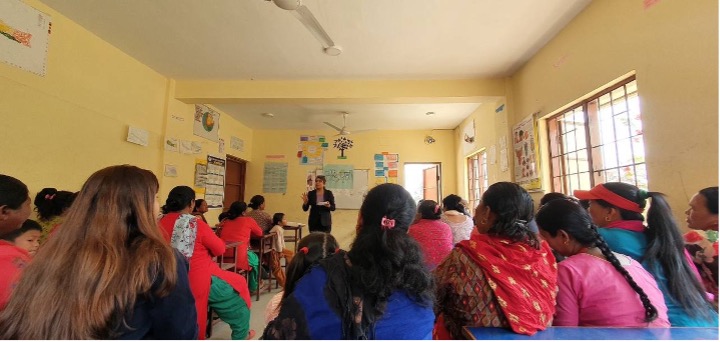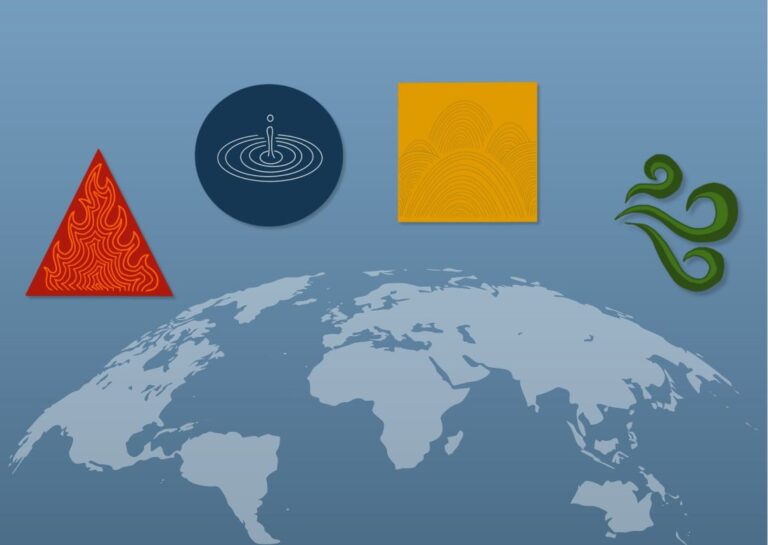Interview with Dr. Shakti Chaurasiya on protecting health professionals in Nepal
August 5, 2020
Dr. Shakti Chaurasiya is the president of the Nepal Medical Student Society. Since the detection of Covid-19 in Nepal, the organisation started a project for protective clothing for doctors and medical staff, which is also supported by Long Yang e.V. and Akasha Academy NGO.

Q – Long Yang: Shakti, could you please shortly introduce the Nepal Medical Students’ Society?
A – Dr. Shakti Chaurasiya: The Nepal Medical Students’ Society is an internationally recognized, non-profit, non-political and purely professional organization of medical students of Nepal also recognized by the government of Nepal. It is guided in its action by two main principles: student welfare and social service. Since its establishment in 1985, NMSS has not only played an important role in uplifting academic environment but also conducted various activities like blood donation, rural health camps, health awareness programs, relief funds for earthquake victims, medical camps during natural disasters, student exchange, cultural programs and celebrations of various international days.

Dr. Shakti Chaurasiya joined NMSS during his studies in 2013. In 2019 he was elected as the president of the 31st Executive Committee of the Organisation. He is also part of NRNA Global health committee (Vice chair) and Nepalese Rapid Health Assessment (Nepal – lead).
Q: How did the Covid-19 crisis change the focus of your work?
A: Since the beginning of the Covid-19 pandemic we have been working on three main topics:
- Awareness for the general people:
- Before the lockdown we conducted various awareness campaigns in different parts of Nepal to educate and raise awareness among the Female Community Health Volunteers.
- Since the lock-down we broadcasted awareness audio programs in different parts of our country in the local language and also conducted video awareness programs through social media.
- Protecting health professionals by providing PPE [personal protective equipment] and training to health professionals regarding COVID-19.
- Helping people solve their general queries regarding health issues via social media. Every day we have a session from different faculties on various “disease prevention” and “cure at home” topics.
Q: Could you please describe the current situation in Nepal?
A: In Nepal, the Government is doing its best for the containment of the virus but still we are having cases at regular intervals. As we don’t have the capacity of doing lots of tests, the lockdown is the only solution for now and it will increase in duration. The main challenges now for Nepal are
- providing safety gears to the health professionals,
- sustaining the lockdown and feed the poor people,
- extending the testing capacity by manpower, testing machines, and kits.
Q: Since the detection of Covid-19 in Nepal, you started a project for protective clothing for doctors and medical staff, which is also supported by Long Yang e.V. and the Akasha Academy. Why did you start the project?
A: As I myself, along with my colleagues, am working in the emergency room of Tribhuvan University Teaching Hospital, we feel scared and unsafe to treat patients with flu-like symptoms without any safety gear (PPE) which was affecting the patient care. As the administration and authorities were not able to provide sufficient PPE, we thought about ways to fill the gap. We started looking for funds for providing PPE to the doctors in the fever clinic, emergency room, and those who are out of reach from the hospital administration.
Q: Which actors are you collaborating with?
A: Within NMSS, the doctors in internship are involved. We join hands with the Nepal Medical Association (NMA), the Non-Residential Nepalese Association (NRNA), the Australasian Nepalese Medical and Dental Association (ANMDA), and the AussieMed Foundation and formed a group called NIRHAT which I am leading. The groups network is helping us with fundraising, need assessment and transportation.


Q: Which areas of Nepal do you supply with PPE?
A: We try to support the areas and health professionals not yet reached by the government: Intern doctors and resident doctors all over the Nepal, emergency room staff of various districts and zonal hospitals of Nepal, and foremost the Primary Health Care Centers located in rural areas which are the first place to visit.
Q: How do you find out about the need for PPE and where to supply them to?
A: Actually, we are using our alumni (past members of NMSS), who are working in different hospitals of Nepal, and we are working in collaboration with NMA, the organisation for practicing doctors. Thus we are in a direct contact with the working doctors in the hospitals. We identify the needs on the basis of cases diagnosed, the risk of new infections and number of patient flow and help from the government.
Q: How is the purchasing and the distribution of the PPE organised? What is the biggest challenge?
A: We maintain a list of Nepalese vendors whom we are purchasing from after we negotiate the conditions. To ensure the quality, we have consulted the Nepal Medical Council (NMC) guidelines. We are purchasing the PPE accordingly with venders who are proving the PPE at cheaper rates with best quality. Regarding transportation, we are using ambulances, vehicles from the hospitals or municipality itself, army and WHO vehicles.
The biggest problem we are facing now is the fundraising and the hiked prices that are being increased by the vendors along with the transportation during this lockdown.
Q: How are the reactions of the medical staff you delivered PPE to?
A: They feel very happy and motivated to do their duty. Even some of the health professionals helped us with our work on fundraising, transportation and need assessment.
Q: Can you say anything about how it affected the patients in the respective areas and the population in general?
A: With the protective gear, health professionals feel safer and they get motivated to work in a challenging environment.
The initial referring and avoiding of patients has been minimized now and the work environment is healthy, which ultimately improves the quality of care to the people.
Thank you very much for the interview, Shakti. All the best for your project.


